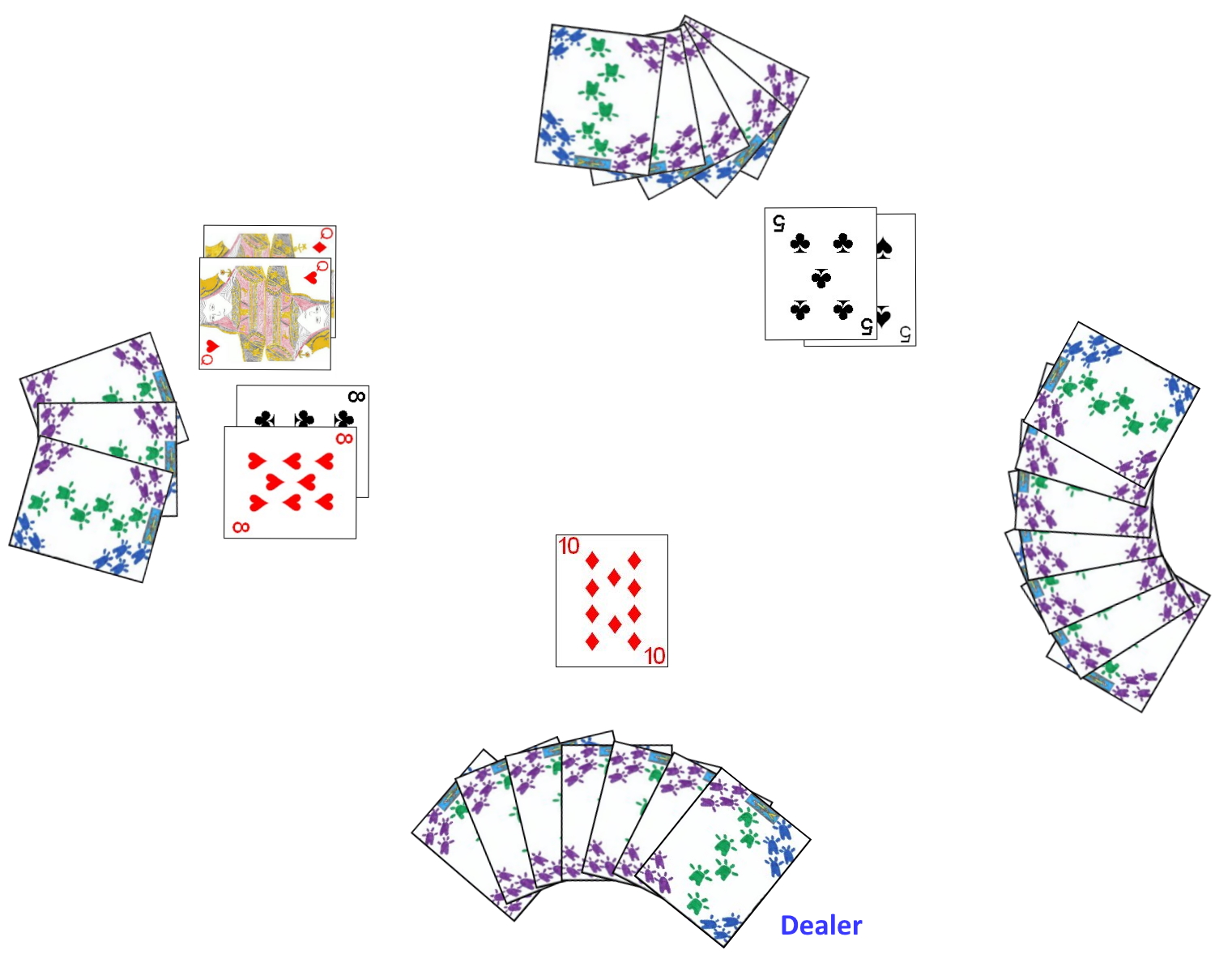How To Play Siku
Siku is a Cambodian card game, most commonly played by children, but often
also enjoyed by players of any age. The game is designed for play by four participants and uses one standard 52 card deck.
Determination of the first dealer can be performed in a variety of ways, with
a cut for high cards a commonly used method. Using this method each player
cuts a card from the shuffled deck and the player cutting the highest ranked card is set as the first dealer, thereafter the role of dealer for each game rotates in a counter-clockwise direction around the table.
To start each game, after shuffling the cards, the dealer then begins dealing
the cards, one by one and face-down, starting with the player at his
immediate right. He continues dealing in a counter-clockwise direction until
each player has seven total cards. He then deals himself one additional card such that he has a total of
eight. The dealer then places the remainder of the deck in a face-down stack near the middle of the table.
 Before play of the hand begins, each player then examines his hand and places, face-up on the table, any pairs of equally ranked cards they may have (i.e. two eights, or two Queens) in front of themselves. If the player has three cards of the same denomination, he places two of those cards in front of himself and keeps the third in the hand. If a player has four of a kind he may place all four of these cards (two pairs) on the table in front of himself.
Before play of the hand begins, each player then examines his hand and places, face-up on the table, any pairs of equally ranked cards they may have (i.e. two eights, or two Queens) in front of themselves. If the player has three cards of the same denomination, he places two of those cards in front of himself and keeps the third in the hand. If a player has four of a kind he may place all four of these cards (two pairs) on the table in front of himself.
Play begins with the dealer selecting any card remaining in his hand and
placing it face up on the table in front of himself. Once this card has been
placed, any other player who has a card of this same rank will then play that
card, placing it face-up on the table in front of themselves. If multiple
players have such a card and attempt to so play the card, the first player to
get his card on the table has precedence and any other players attempting to
also play a card of the same rank must take then their card back into their
hand.
The player who successfully played a matching card then is entitled to select any card remaining in his hand and place it face-up on the table, also in front of himself. The other players then attempt to so match this card, as in the previous turn.
If no other player can match this second card so played to the table, the dealer then draws one card from the top of the stock, placing it face-up in front of one of the players (usually the player who had the last play), and the other players attempt to match this new card to continue the game.
The game continues in this way until a player, who has only one card
remaining in his hand, is enabled to play that last card from his hand, by being the first to match it with
a card of the same rank played by another player at the end of that other player's turn. The player who manages to do this first is declared the winner of the game.
Variations and Optional Rules
Stacked Cards: In some games, in matching the card played by the previous player, a player is required to play the card on top of that opponent's matching card. The first such matching card played on
that card is considered a legal play, and any other players attempting to play a card of that same denomination must take the cards they had attempted to play back into their hand. In all other aspects, this variation is played identically to the standard game.
Copyright © 2015
CatsAtCards.com. All rights reserved.
 Before play of the hand begins, each player then examines his hand and places, face-up on the table, any pairs of equally ranked cards they may have (i.e. two eights, or two Queens) in front of themselves. If the player has three cards of the same denomination, he places two of those cards in front of himself and keeps the third in the hand. If a player has four of a kind he may place all four of these cards (two pairs) on the table in front of himself.
Before play of the hand begins, each player then examines his hand and places, face-up on the table, any pairs of equally ranked cards they may have (i.e. two eights, or two Queens) in front of themselves. If the player has three cards of the same denomination, he places two of those cards in front of himself and keeps the third in the hand. If a player has four of a kind he may place all four of these cards (two pairs) on the table in front of himself.